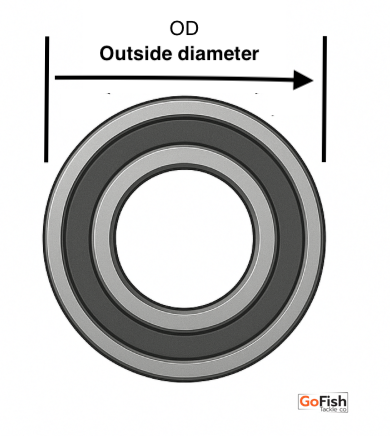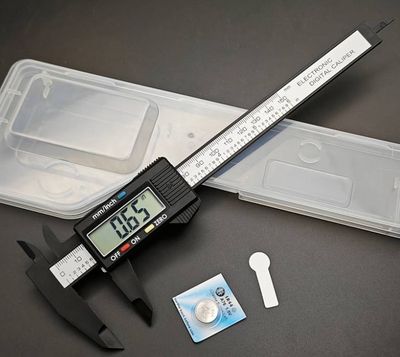Welcome to GoFish. Fishing reel bearings and quality tackle
Fishing reel bearing technical information
1. What do ID, OD, and width mean in fishing reel bearings?
- ID is the inside diameter (hole size for the shaft), OD is the outside diameter (overall bearing size), and width is the bearing’s thickness. For example, a 4x11x4 bearing has a 4mm ID, 11mm OD, and 4mm width.
2. How do you measure bearing ID, OD, and width accurately?
- Use a digital caliper for precision. Measure ID by spanning inside the bearing hole, OD around the outside edge, and width from one flat face to the other. Example ID 10mm OD 22mm width 6mm that's a 10x22x6 bearing.



3. What do ABEC ratings signify for reel bearings?
- ABEC ratings (1, 3, 5, 7, 9) indicate the manufacturing precision and tolerance of ball bearings. Higher ratings offer greater precision—fewer dimensional imperfections—which can contribute to smoother and faster operation. ABEC ratings don’t necessarily mean the bearing will spin more freely, but rather that its components are manufactured to tighter tolerances.
4. Why are ABEC ratings not always critical in fishing reels?
- Fishing reels operate at relatively low speeds and loads compared to industrial machinery. Upgrading to higher ABEC ratings may yield minimal noticeable improvement, but can increase cost, ABEC 5 is the best choice for performance and value
5. What’s the importance of 440 stainless steel in fishing reel bearings?
- 440 grade stainless steel offers excellent corrosion resistance to salt water, critical for reel bearings exposed to marine environments. It withstands very high temperatures and corrosive conditions, maintaining toughness even in cryogenic settings.
6. How do saltwater tests assess bearing performance?
- Bearings are exposed to salt spray, immersion, or salt fog to simulate harsh marine environments. 440 stainless steel bearings maintain low corrosion, demonstrating suitability for saltwater fishing.
7. Are all high-rated ABEC bearings genuine?
- Not always. Some bearings are fraudulently marketed at higher ABEC ratings. True high ABEC-rated (e.g., 7, 9) bearings are expensive and should have certification or traceability.
8. What’s the difference between shielded and sealed reel bearings?
- Shielded bearings use a thin metal shield to limit dirt and water, while sealed bearings use rubber seals for maximum protection. Shielded bearings are easier to clean but less protected than sealed bearings; both can be found in 440 stainless steel.
9. What lubricant is best for fishing reel bearings in saltwater?
- Use lubricants designed for marine environments, like ReelX or waterproof instrument oils. Regularly re-oil and spin your reel to minimize corrosion risks.
10. How do you choose the right replacement bearing?
- Most manufactures of reels don't list bearings by size, so best you can do is measure or order by part number which you can find in your reels schematic. Match with ABEC 5–7 440 stainless steel bearings. Use a caliper if uncertain; bearing mostly come in shielded or sealed types depending on desired maintenance and exposure levels.
Quick Table: Key Terms decode a 4x11x4 bearing
- ABEC ratings: focus on manufacturing precision, not just smoothness.
- Measure with calipers; match OEM specs for replacement.
- 440 stainless steel recommended for saltwater; test for corrosion resistance.
- Shielded bearings: easier to clean, sealed: superior protection.
If you need specific bearing size info, contact us, we’ll get you rolling!
Refine by
Display prices in:NZD

